The Global Famine Begins: The Worst Food Crisis Since World War II Is Happening Right Now
Famines see the health of the masses decline as widespread food scarcity reaches drastically devastating levels.
A famine is a phenomenon involving the catastrophic disruption of food production, distribution, and/or consumption in a society, leading to severe undernourishment of the human population therein. This often leads to widespread deaths due to starvation and other undernutrition-related causes. Famine in the natural world is usually triggered by the growth of population beyond the regional carrying capacity. However, in the case of human society, the source of famine is highly complex, and often involves a combination of natural and man-made factors triggering the low availability of food and nutrition. Natural factors responsible for famine include floods, droughts, earthquakes, volcanic eruptions, and other natural calamities. Anthropogenic factors such as warfare and poor resource management by governments might also result in. or otherwise worsen, famines. Famines result in a significant fall in the human population affected by such phenomena. Young children and the elderly are the worst affected sections of the population in times of famine, while adult women of child-bearing age are often the least affected.
The Great Famine is a reminder of the way failures in agriculture can drive lasting historical change—while leading to immense human suffering. That’s a useful backdrop of a new analysis on the impact global warming will have on crop yields, just published in Nature Climate Change. The news isn’t good: the research, based on a new set of data created by the combination of 1,700 previously published studies, found that global warming of only 2º C (3.6º F) will likely reduce yields of staple crops like rice and maize as early as the 2030s. And as the globe keeps warming, crop yields will keep shriveling unless drastic steps are taken to adapt to a changing climate.
Agriculture has always been at the mercy of unpredictable weather, but a rapidly changing climate is making agriculture an even more vulnerable enterprise. In some regions, warmer temperatures may increase crop yields. The overall impact of climate change on agriculture, however, is expected to be negative—reducing food supplies and raising food prices. Many regions already suffering from high rates of hunger and food insecurity, including parts of sub-Saharan Africa and South Asia, are predicted to experience the greatest declines in food production. Elevated levels of atmospheric carbon dioxide (CO2) are also expected to lower levels of zinc, iron, and other important nutrients in crops.
With changes in rainfall patterns, farmers face dual threats from flooding and drought. Both extremes can destroy crops. Flooding washes away fertile topsoil that farmers depend on for productivity, while droughts dry it out, making it more easily blown or washed away. Higher temperatures increase crops’ water needs, making them even more vulnerable during dry periods.
Certain species of weeds, insects, and other pests benefit from higher temperatures and elevated CO2, increasing their potential to damage crops and creating financial hardship for farmers. Shifting climates also mean that agricultural pests can expand to new areas where farmers hadn’t previously dealt with them.
With higher temperatures, most of the world’s glaciers have begun to recede—affecting farmers who depend on glacial melt water for irrigation.1,5 Rising sea levels, meanwhile, heighten flood dangers for coastal farms, and increase saltwater intrusion into coastal freshwater aquifers—making those water sources too salty for irrigation.
Climate change is also expected to impact ecosystems and the services they provide to agriculture, such as pollination and pest control by natural predators. Many wild plant species used in domestic plant breeding, meanwhile, are threatened by extinction.
Over the centuries, major famines all across the world have claimed the lives of millions of people. For example, exploitative British policies combined with crop failures and drought resulted in the Bengal Famine of 1770, which claimed the lives of nearly 10 million people in the region, while the nearby Chalisa famine of North India in 1783, itself caused by severe drought in the region, left 11 million dead. Another major famine of past times, the Great Famine of Ireland, claimed the lives of nearly 1.5 million Irish between 1845 and 1853. Potato blight disease and British apathy towards the famine-stricken Irish were major factors triggering such a disaster.
Due to the rapid growth of human populations in recent decades, famines have become more severe, and the death tolls resulting from these disasters have also risen considerably. The first half of the 20th Century witnessed several major famines, including the Chinese Famine of 1907, which left nearly 25 million people dead, the Russian Famine of 1921 which claimed 5 million lives, the Soviet Famine of 1932-1933, which killed nearly 10 million people, and the concurrent Great Chinese Famine of 1932-1933, which astonishingly claimed nearly 43 million lives. The latter two famines were the result of inefficient communist policies which led to the loss of privately owned farming lands by farmers, and the enforcement of inefficient practices related to collective farming experiments, leading to poor crop production and lack of food on national scales. Two major famines of the middle of the 20th Century were the Bengal Famine of 1943, killing 7 million Bengalis, and the Vietnamese Famine of 1945, killing 2 million Vietnamese. Both of these famines occurred in the backdrop of the World War II, and the Japanese occupiers’ apathy, together with nature’s wrath in the form of floods and droughts, triggered these famines. The last major famine of the 20th Century was the North Korean Famine, lasting between 1994 and 1998, which resulted in the deaths of 3 million people. In the 21st Century era, famine continues to be a worldwide problem, especially in Sub-Saharan African countries. Though the recent African famines have resulted in high child mortality rates, severe malnourishment, and impoverishment, the death toll of these famines have yet to come close to the major famines of 20th Century Asia. The worst famine in Africa to date was the 1983–1985 Famine in Ethiopia, with that event killing nearly 400,000 Africans.
Several famine relief and warning systems have been established by government and non-governmental systems across the world, especially since the formation of the United Nations and other multilateral organizations following the conclusion of World War II. Food security gradation methods are often applied to understand the food security status prevailing in a region so that early warnings of famine might be provided. The earliest models of such systems, the Indian Famine Codes, were devised by the British to prevent the famines in what was British India, and included a three stage (1. near scarcity, 2. scarcity, and 3. famine) categorization of food security. The advent of technology to produce high-yielding crop varieties allowed for a higher production of crops worldwide, and ushered in the Green Revolution in the 1960s. Many believed the Green Revolution would be the answer to solve world food crisis. However, others do not prefer this method, as it demands a high amount of fertilizers and pesticides to grow crops. Currently, the World Food Program and the U.S. Agency for International Development use sophisticated techniques to measure the food security problems of the world, and have devised a 5-level scale that measures both the magnitude (in terms of geographic scope and numbers of people affected) and intensity of famines.
Discover how to survive: Most complete survival tactics, tips, skills and ideas like how to make pemmican, snow shoes, knives, soap, beer, smoke houses, bullets, survival bread, water wheels, herbal poultices, Indian round houses, root cellars, primitive navigation, and much more at: ►►Prepperfortress
As per current estimates, the world population is expected to grow to 9.2 billion in 2050. Thus, the global demand for food is also expected to expand significantly in the coming years. However, resource scarcity is the major greatest threat to the world in the near future. Today, the freshwater resources of our planet are already in danger due to high rates of pollution, volume losses due to evaporation, and high levels of sedimentation. It is difficult under such circumstances to understand how the world will have enough fresh water to irrigate the crop fields of the future, or even meet people’s basic needs for drinking water. Climate change worsens the situation by increasing the chances for future floods and droughts, depending upon the region and time of year, each of which are capable of damaging cultivation spaces and consequently trigger future famines.
Great Famine Ireland
1.5 million dead, 2 million emigrated
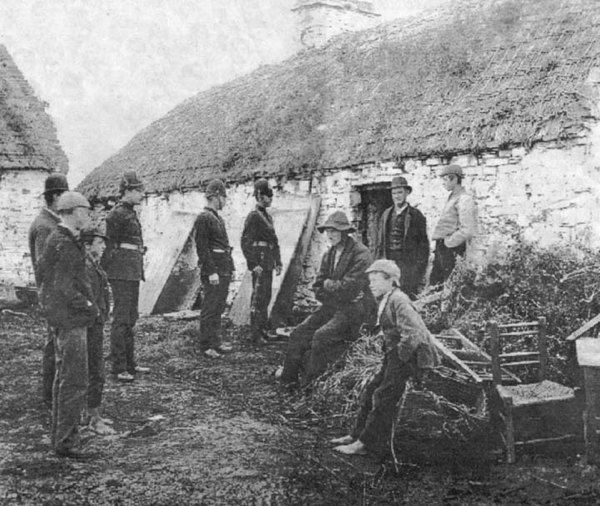
One of the most famous famines in history, the Great Famine was caused by a devastating potato disease. 33% of the Irish population relied on the potato for sustenance, and the onset of the disease in 1845 triggered mass starvations that lasted until 1853. The large Catholic population was suppressed by British rule, and left unable to own or lease land, or hold a profession. When the blight struck, British ships prevented other nations from delivering food aid. Ireland experienced a mass exodus, with upwards of 2 million people fleeing the country, many to the United States. At its conclusion in 1853, 1.5 million Irish were dead, and an additional 2 million had emigrated. In total, the population of Ireland shrunk by a resounding 25%.
Vietnamese Famine of 1945
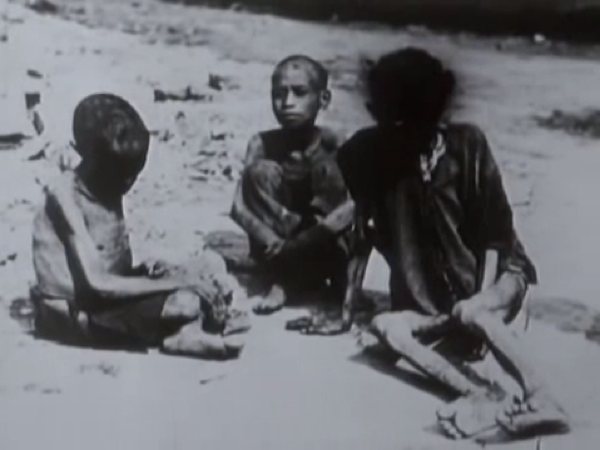
As a protectorate under France, Vietnam was under colonial rule for much of World War II. As Japanese expansion began in Indochina, Vietnam was taken for the Japanese, and a collaborationist French government sided with the Japanese. Agricultural focus shifted from sustenance to war-materials, specifically rubber. The Japanese exploited what little crop farms remained, and the invading forces commandeered most of these crops. This, teamed with an unbearable drought followed by biblical flooding, caused mass starvation across much of Northern Vietnam. The resulting famine killed 2 million Vietnamese.
North Korean Famine
3 million dead
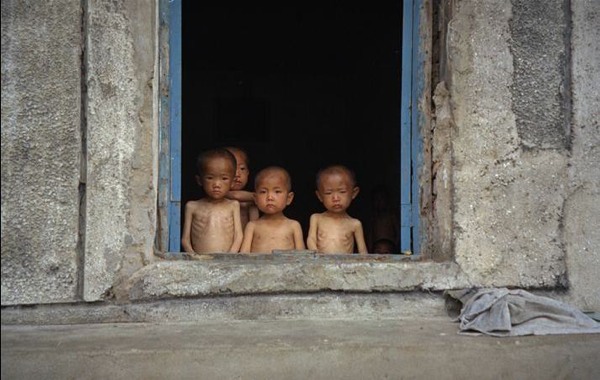
As the most recent famine on this list, North Korea suffered a tremendous famine from 1994 to 1998, brought about by a combination of misguided leadership and large scale flooding. Torrential rains in 1995 flooded the farming regions, and destroyed 1.5 million tons of grain reserves. Politically, Kim Jung Il implemented a “Military First” policy, which placed the needs of the military above the needs of the common people, food rations included. The isolated nation suffered from a stagnating economy, and was unable and unwilling to import food. As such, the childhood mortality rate rose to 93 out of 1000 children, and the mortality rate of pregnant women rose to 41 out of 1000 mothers. Over a 4-year span, an estimated 2.5-3 million people perished due to malnutrition and starvation.
Russian Famine of 1921
5 million dead
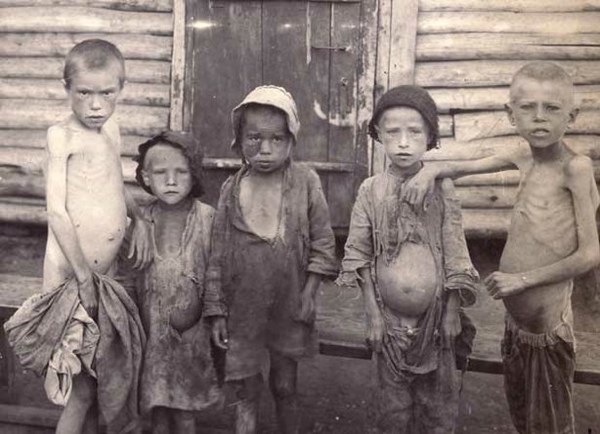
The early 20th century was a tumultuous time for Russians, as they lost millions in World War I, experienced a violent revolution in 1917, and suffered from multiple Civil Wars. Throughout the wars, the Bolshevik soldiers often forced peasants to sacrifice their food, with little in return. As such, many peasants stopped growing crops, as they could not eat what they sowed. This resulted in a massive shortage of food and seed. Many peasants had taken to eating seeds, as they knew they could not eat any crops they grew. By 1921, 5 million Russians had perished.

Bengal Famine of 1943
7 million dead

The Bengal Famine of 1943 was set about by a whirlwind of catastrophic events. With World War II raging and Japanese imperialism growing, Bengal lost their largest trading partner in Burma. A majority of the food the Bengalis consumed was imported from Burma, but the Japanese suspended the trade. In 1942, Bengal was hit by a cyclone and three separate tidal waves. The ensuing floods destroyed 3200 square miles of viable farmland. An unpredictable fungus, destroying 90% of all rice crops in the region, then struck crops. Meanwhile, refugees fleeing the Japanese from Burma entered the region by the millions, increasing the need for food supplies. By December of 1943, 7 million Bengalis and Burmese refugees were dead due to starvation.
Bengal Famine of 1770
10 million dead
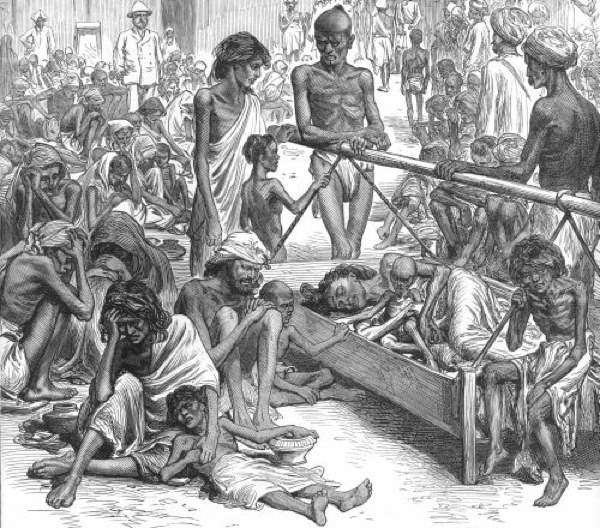
Yet another famine in Bengal, this horrific event killed a third of the population. Largely ruled by the English-owned East India Company, reports of severe drought and crop shortages were ignored, and the company continued to increase taxes on the region. Farmers were unable to grow crops, and any food that could be purchased was too expensive for the starving Bengalis. The company also forced farmers to grow indigo and opium, as they were much more profitable than inexpensive rice. Without large rice stocks, people were left with no food reserves, and the ensuing famine killed 10 million Bengalis.
Soviet Famine of 1932-1933
10 million dead

Incredibly, the severity of this famine was not fully known in the West until the collapse of the USSR in the 1990s. The main cause was the policy of collectivization administered by Josef Stalin. Under collectivization, large swaths of land would be converted into collective farms, all maintained by peasants. Stalin went about implementing this by destroying the peasants existing farms, crops, and live-stock, and forcibly taking their land. Reports of peasants hiding crops for individual consumption led to wide-scale search parties, and any hidden crops found were destroyed. In actuality, many of these crops were simply seeds that would be planted shortly. The destruction of these seeds and the forced collectivization of land caused mass starvation, killing an estimated 10 million people.
Chalisa famine
11 million dead
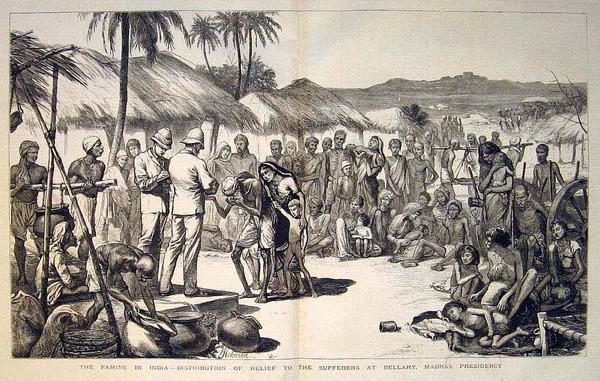
The Chalisa famine refers to the year in the Vikram Samvat calendar used in Northern India. Occurring in 1783, the region suffered from an unusually dry year, as a shift in the El Nino weather system brought significantly less rain to the region. Vast swaths of crops withered and died, and livestock perished due to lack of food and drinking water. The tumultuous year killed 11 million Indians.
Chinese Famine of 1907
25 million dead
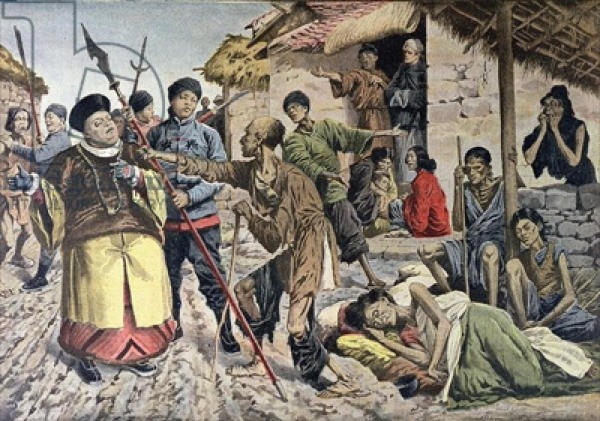
Ranking second in terms of death toll, the Chinese Famine of 1907 was a short-lived event that took the lives of nearly 25 million people. East-Central China was reeling from a series of poor harvests when a massive storm flooded 40,000 square miles of lush agricultural territory, destroying 100% of the crops in the region. Food riots took place daily, and were often quelled through the use of deadly force. It is estimated that, on a good day, only 5,000 were dying due to starvation. Unfortunately for the Chinese, this would not be their last great famine.
Great Chinese Famine
43 million dead

Much like the Soviet Famine of 1932-1933, the Great Chinese Famine was caused by Communist leaders attempting to force change upon an unwilling population. As part of their “Great Leap Forward”, the owning of private land was outlawed in China in 1958. Communal farming was implemented in an attempt to increase crop production. More relevant, however, was the importance the Communist Regime placed on iron and steel production. Millions of agricultural workers were forcibly removed from their fields and sent to factories to create metal.
In addition to these fatal errors, Chinese officials mandated new methods of planting. Seeds were to be planted 3-5 feet under the soil, extremely close together, to maximize growth and efficiency. In practice, what little seeds that sprouted were severely stunted in growth due to overcrowding. These failed policies, teamed with a flood in 1959 and a drought in 1960, affected the entirety of the Chinese nation. By the time the Great Leap Forward had ended in 1962, 43 million Chinese had died from the famine.
Why men die faster than women during a famine has often baffled scientists. It is possible that the greater natural ability of women to resist malnutrition and sustain themselves on fall-back famine foods could be responsible for their better survival during famines.
And this CAN be done.
SOURCE

No comments:
Post a Comment